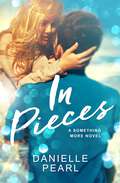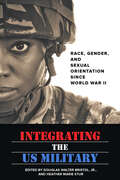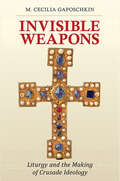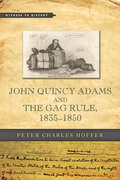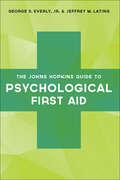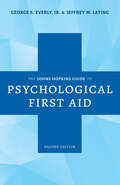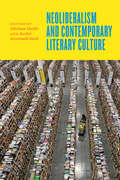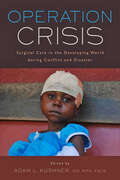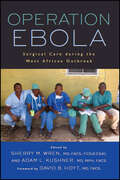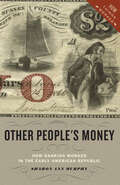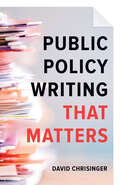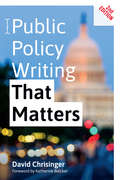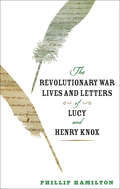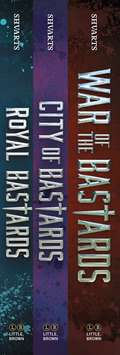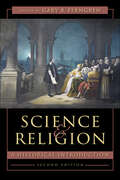- Table View
- List View
In Pieces (Something More #2)
by Danielle PearlThree years ago she was left in pieces . . .Most college freshmen love the newfound freedom of living on campus, but none of them craves it like Beth Caplan. One ill-fated night when she was fifteen left her locked in a posh prison of private tutors. It's for the best, everyone said, and maybe it was. But after years of hard work and healing, the one person who never thought of her as broken could be the one to break her all over again. And Beth can't seem to stay away now any more than she could all those years ago. As soon as David March learned his best friend's little sister was enrolling at his school, he promised to look after her, and promised himself he'd keep a safe distance. But the sweet little girl he'd grown up with has transformed into a gorgeous young woman, and she's attracting attention from people she shouldn't-like the ex who nearly destroyed her and a strange new student with a disturbing habit of showing up wherever Beth goes. But for David, the most troubling discovery is realizing that he doesn't just want Beth to be safe. He wants her to be his.
Integrating the US Military: Race, Gender, and Sexual Orientation since World War II
by Douglas W. Bristol Jr. Heather Marie SturOne of the great ironies of American history since World War II is that the military;¢;‚¬;€?typically a conservative institution;¢;‚¬;€?has often been at the forefront of civil rights. In the 1940s, the 1970s, and the early 2000s, military integration and promotion policies were in many ways more progressive than similar efforts in the civilian world. Today, the military is one of the best ways for people from marginalized groups to succeed based solely on job performance.Integrating the US Military traces the experiences of African Americans, Japanese Americans, women, and gay men and lesbians in the armed forces since World War II. By examining controversies from racial integration to the dismantling of "Don;€™t Ask, Don;€™t Tell" to the recent repeal of the ban on women in combat, these essays show that the military is an important institution in which social change is confirmed and, occasionally, accelerated. Remarkably, the challenges launched against the racial, gender, and sexual status quo in the postwar years have also broadly transformed overarching ideas about power, citizenship, and America;€™s role in the world.The first comparative study of legally marginalized groups within the armed services, Integrating the US Military is a unique look at the history of military integration in theory and in practice. The book underscores the complicated struggle that accompanied integration and sheds new light on a broad range of comparable issues that affect civilian society, including affirmative action, marriage laws, and sexual harassment.
Integrating the US Military: Race, Gender, and Sexual Orientation since World War II
by Douglas W. Bristol Jr. Heather Marie SturOne of the great ironies of American history since World War II is that the military;¢;‚¬;€?typically a conservative institution;¢;‚¬;€?has often been at the forefront of civil rights. In the 1940s, the 1970s, and the early 2000s, military integration and promotion policies were in many ways more progressive than similar efforts in the civilian world. Today, the military is one of the best ways for people from marginalized groups to succeed based solely on job performance.Integrating the US Military traces the experiences of African Americans, Japanese Americans, women, and gay men and lesbians in the armed forces since World War II. By examining controversies from racial integration to the dismantling of "Don;€™t Ask, Don;€™t Tell" to the recent repeal of the ban on women in combat, these essays show that the military is an important institution in which social change is confirmed and, occasionally, accelerated. Remarkably, the challenges launched against the racial, gender, and sexual status quo in the postwar years have also broadly transformed overarching ideas about power, citizenship, and America;€™s role in the world.The first comparative study of legally marginalized groups within the armed services, Integrating the US Military is a unique look at the history of military integration in theory and in practice. The book underscores the complicated struggle that accompanied integration and sheds new light on a broad range of comparable issues that affect civilian society, including affirmative action, marriage laws, and sexual harassment.
Invisible Weapons: Liturgy and the Making of Crusade Ideology
by M. Cecilia GaposchkinThroughout the history of the Crusades, liturgical prayer, masses, and alms were all marshaled in the fight against Muslim armies. In Invisible Weapons, M. Cecilia Gaposchkin focuses on the ways in which Latin Christians communicated their ideas and aspirations for crusade to God through liturgy, how public worship was deployed, and how prayers and masses absorbed the ideals and priorities of crusading. Placing religious texts and practices within the larger narrative of crusading, Gaposchkin offers a new understanding of a crucial facet in the culture of holy war.
John Quincy Adams and the Gag Rule, 1835–1850 (Witness to History)
by Peter Charles HofferPassed by the House of Representatives at the start of the 1836 session, the gag rule rejected all petitions against slavery, effectively forbidding Congress from addressing the antislavery issue until it was rescinded in late 1844. In the Senate, a similar rule lasted until 1850. Strongly supported by all southern and some northern Democratic congressmen, the gag rule became a proxy defense of slavery’s morality and economic value in the face of growing pro-abolition sentiment. In John Quincy Adams and the Gag Rule, 1835–1850, Peter Charles Hoffer transports readers to Washington, DC, in the period before the Civil War to contextualize the heated debates surrounding the rule. At first, Hoffer explains, only a few members of Congress objected to the rule. These antislavery representatives argued strongly for the reception and reading of incoming abolitionist petitions. When they encountered an almost uniformly hostile audience, however, John Quincy Adams took a different tack. He saw the effort to gag the petitioners as a violation of their constitutional rights. Adams’s campaign to lift the gag rule, joined each year by more and more northern members of Congress, revealed how the slavery issue promoted a virulent sectionalism and ultimately played a part in southern secession and the Civil War. A lively narrative intended for history classrooms and anyone interested in abolitionism, slavery, Congress, and the coming of the Civil War, John Quincy Adams and the Gag Rule, 1835–1850, vividly portrays the importance of the political machinations and debates that colored the age.
John Quincy Adams and the Gag Rule, 1835–1850 (Witness to History)
by Peter Charles HofferPassed by the House of Representatives at the start of the 1836 session, the gag rule rejected all petitions against slavery, effectively forbidding Congress from addressing the antislavery issue until it was rescinded in late 1844. In the Senate, a similar rule lasted until 1850. Strongly supported by all southern and some northern Democratic congressmen, the gag rule became a proxy defense of slavery’s morality and economic value in the face of growing pro-abolition sentiment. In John Quincy Adams and the Gag Rule, 1835–1850, Peter Charles Hoffer transports readers to Washington, DC, in the period before the Civil War to contextualize the heated debates surrounding the rule. At first, Hoffer explains, only a few members of Congress objected to the rule. These antislavery representatives argued strongly for the reception and reading of incoming abolitionist petitions. When they encountered an almost uniformly hostile audience, however, John Quincy Adams took a different tack. He saw the effort to gag the petitioners as a violation of their constitutional rights. Adams’s campaign to lift the gag rule, joined each year by more and more northern members of Congress, revealed how the slavery issue promoted a virulent sectionalism and ultimately played a part in southern secession and the Civil War. A lively narrative intended for history classrooms and anyone interested in abolitionism, slavery, Congress, and the coming of the Civil War, John Quincy Adams and the Gag Rule, 1835–1850, vividly portrays the importance of the political machinations and debates that colored the age.
The Johns Hopkins Guide to Psychological First Aid
by George S. Everly Jr. Jeffrey M. LatingPsychological first aid, or PFA, is designed to mitigate the effects of acute stress and trauma and assist those in crisis to cope effectively with adversity. PFA is designed to be applied in emergencies, including disasters and terrorist attacks. In this essential guide, George S. Everly, Jr., developer of the Johns Hopkins RAPID PFA method, and Jeffrey M. Lating, his collaborator in its implementation, describe the principles and practices underpinning this psychological model in an easy-to-follow, prescriptive, and practical manner. They explain the history of PFA and persuasively demonstrate its powerful versatility. Mental health practitioners can apply PFA in all settings. It can also be used as a public-health tool to address mental health needs following critical incidents and as a means for building community resilience.Aimed at mental health practitioners, all first responders, and global health disaster teams such as M;©decins Sans Fronti;¨res and the World Health Organization, The Johns Hopkins Guide to Psychological First Aid is the first book to thoroughly explain RAPID PFA. RAPID, a unique theoretically grounded and evidence-based PFA method, follows a set of easily understood principles. In each chapter, Everly and Lating provide a step-by-step approach and include a key point summary to emphasize essential elements. A unifying case exemplifies each phase of the RAPID PFA model in an ongoing dialogue that presents ideal PFA responses, examples of common mistakes, and various outcomes.In addition to their counseling experience in Kuwait after the Gulf War and in New York City after the September 11 attacks, the authors have traveled nationally and internationally to teach the RAPID PFA method in numerous public health, fire, police, military, and faith-based settings. Beneficial to those with little or no previous mental health training, this book is an essential tool for people who want to learn, to practice, or to retain their ability to use psychological first aid effectively.
The Johns Hopkins Guide to Psychological First Aid
by George S. Everly Jr. Jeffrey M. LatingPsychological first aid, or PFA, is designed to mitigate the effects of acute stress and trauma and assist those in crisis to cope effectively with adversity. PFA is designed to be applied in emergencies, including disasters and terrorist attacks. In this essential guide, George S. Everly, Jr., developer of the Johns Hopkins RAPID PFA method, and Jeffrey M. Lating, his collaborator in its implementation, describe the principles and practices underpinning this psychological model in an easy-to-follow, prescriptive, and practical manner. They explain the history of PFA and persuasively demonstrate its powerful versatility. Mental health practitioners can apply PFA in all settings. It can also be used as a public-health tool to address mental health needs following critical incidents and as a means for building community resilience.Aimed at mental health practitioners, all first responders, and global health disaster teams such as M;©decins Sans Fronti;¨res and the World Health Organization, The Johns Hopkins Guide to Psychological First Aid is the first book to thoroughly explain RAPID PFA. RAPID, a unique theoretically grounded and evidence-based PFA method, follows a set of easily understood principles. In each chapter, Everly and Lating provide a step-by-step approach and include a key point summary to emphasize essential elements. A unifying case exemplifies each phase of the RAPID PFA model in an ongoing dialogue that presents ideal PFA responses, examples of common mistakes, and various outcomes.In addition to their counseling experience in Kuwait after the Gulf War and in New York City after the September 11 attacks, the authors have traveled nationally and internationally to teach the RAPID PFA method in numerous public health, fire, police, military, and faith-based settings. Beneficial to those with little or no previous mental health training, this book is an essential tool for people who want to learn, to practice, or to retain their ability to use psychological first aid effectively.
The Johns Hopkins Guide to Psychological First Aid
by George S. Everly Jr. Jeffrey M. LatingLearn the essential skills of psychological first aid from the experts—the creators of the Johns Hopkins RAPID PFA method.Psychological first aid, or PFA, is designed to mitigate the effects of acute stress and trauma and assist those in crisis to cope effectively. PFA can be applied in emergencies, including disasters, terrorist attacks, and the COVID-19 pandemic. In the second edition of this essential guide, George S. Everly, Jr., and Jeffrey M. Lating draw on their experiences in Kuwait after the Gulf War, in New York City after the September 11 attacks, and during the COVID-19 pandemic to describe the principles and practices of PFA in an easy-to-follow, prescriptive, and practical manner. Informed by current events, the second edition includes updated chapters as well as three completely new chapters on • cultural awareness• PFA considerations with children• the use of PFA to facilitate community mental health and resilienceAimed at mental health practitioners, first responders, and global health disaster teams such as Médecins Sans Frontières and the World Health Organization, but also beneficial to those with little or no previous mental health training, The Johns Hopkins Guide to Psychological First Aid thoroughly explains RAPID PFA. RAPID, a unique evidence-informed and evidence-based PFA method, follows a set of easily understood principles. In each chapter, Everly and Lating—who have traveled nationally and internationally to teach the RAPID PFA model in numerous public health, fire, police, military, business, and faith-based settings—provide a step-by-step approach and include a key point summary. A unifying case exemplifies each phase of the RAPID PFA model in an ongoing dialogue that presents ideal PFA responses, examples of common mistakes, and various outcomes.
Neoliberalism and Contemporary Literary Culture
by Mitchum Huehls Rachel Greenwald SmithNeoliberalism has been a buzzword in literary studies for well over a decade, but its meaning remains ambiguous and its salience contentious. In Neoliberalism and Contemporary Literary Culture, Mitchum Huehls and Rachel Greenwald Smith offer a wide-ranging exploration of contemporary literature through the lens of neoliberalism;€™s economic, social, and cultural ascendance. Bringing together accessible and provocative essays from top literary scholars, this innovative collection examines neoliberalism;€™s influence on literary theory and methodology, literary form, literary representation, and literary institutions. A four-phase approach to the historical emergence of neoliberalism from the early 1970s to the present helps to clarify the complexity of the relationship between neoliberalism and literary culture. Layering that history over the diverse changes in a US-Anglo literary field that has moved away from postmodern forms and sensibilities, the book argues that many literary developments;¢;‚¬;€?including the return to realism, the rise of the memoir, the embrace of New Materialist theory, and the pursuit of aesthetic autonomy;¢;‚¬;€?make more coherent sense when viewed in light of neoliberalism;€™s ever-increasing expansion into the cultural sphere.The essays gathered here engage a diverse range of theorists, including Michel Foucault, Wendy Brown, Giorgio Agamben, Bruno Latour, Maurice Merleau-Ponty, Gary Becker, and Eve Sedgwick to address the reciprocal relationship between neoliberalism and conceptual fields such as biopolitics, affect, phenomenology, ecology, and new materialist ontology. These theoretical perspectives are complemented by innovative readings of contemporary works of literature by writers such as Jennifer Egan, Ben Lerner, Gillian Flynn, Teju Cole, Jonathan Franzen, Chimamanda Ngozi Adichie, Salvador Plascencia, E. L. James, Lisa Robertson, Kenneth Goldsmith, and many others. Neoliberalism and Contemporary Literary Culture is essential reading for anyone invested in the ever-changing state of literary culture.
Neoliberalism and Contemporary Literary Culture
by Mitchum Huehls Rachel Greenwald SmithNeoliberalism has been a buzzword in literary studies for well over a decade, but its meaning remains ambiguous and its salience contentious. In Neoliberalism and Contemporary Literary Culture, Mitchum Huehls and Rachel Greenwald Smith offer a wide-ranging exploration of contemporary literature through the lens of neoliberalism;€™s economic, social, and cultural ascendance. Bringing together accessible and provocative essays from top literary scholars, this innovative collection examines neoliberalism;€™s influence on literary theory and methodology, literary form, literary representation, and literary institutions. A four-phase approach to the historical emergence of neoliberalism from the early 1970s to the present helps to clarify the complexity of the relationship between neoliberalism and literary culture. Layering that history over the diverse changes in a US-Anglo literary field that has moved away from postmodern forms and sensibilities, the book argues that many literary developments;¢;‚¬;€?including the return to realism, the rise of the memoir, the embrace of New Materialist theory, and the pursuit of aesthetic autonomy;¢;‚¬;€?make more coherent sense when viewed in light of neoliberalism;€™s ever-increasing expansion into the cultural sphere.The essays gathered here engage a diverse range of theorists, including Michel Foucault, Wendy Brown, Giorgio Agamben, Bruno Latour, Maurice Merleau-Ponty, Gary Becker, and Eve Sedgwick to address the reciprocal relationship between neoliberalism and conceptual fields such as biopolitics, affect, phenomenology, ecology, and new materialist ontology. These theoretical perspectives are complemented by innovative readings of contemporary works of literature by writers such as Jennifer Egan, Ben Lerner, Gillian Flynn, Teju Cole, Jonathan Franzen, Chimamanda Ngozi Adichie, Salvador Plascencia, E. L. James, Lisa Robertson, Kenneth Goldsmith, and many others. Neoliberalism and Contemporary Literary Culture is essential reading for anyone invested in the ever-changing state of literary culture.
Operation Crisis: Surgical Care in the Developing World during Conflict and Disaster (Operation Health)
by Adam L. KushnerSurgical care is increasingly recognized as a critical component of global health, and strong surgical skills, teamwork, and poise under pressure become even more imperative during conflict or disaster. When faced with hospital bombings or devastating earthquakes, healthcare personnel must develop special techniques and abilities to ably care for patients despite limited resources and a disrupted health system. In Operation Crisis, Dr. Adam L. Kushner brings together 22 medical experts from around the world to recount their experiences in the field when disaster struck. These candid firsthand accounts from both local and international aid surgeons provide clinicians and public health practitioners with insightful lessons for effectively treating surgical patients under the most grueling of circumstances.Moving from conflict settings that include war zones in Afghanistan, the Democratic Republic of the Congo, Syria, and South Sudan, Operation Crisis also touches on post-earthquake Haiti and Nepal and post-tsunami Indonesia. Individual themed chapters cover mass casualty training, burn care, obstetric care, sexual violence, and landmine injuries. Combining personal stories with lessons learned and possible interventions, these vivid and affecting essays detail the immediate aftermath of conflict and disaster while pointing the way to improving care for future victims of crisis.Intended to spark further discussion and function as an advocacy tool while highlighting situations where surgical care can save lives and reduce disability, this book is a valuable resource for medical professionals, students, policy makers, international aid organizations, and philanthropic donors.Contributors: Kapendra Shekhar Amatya, Samer Attar, Jeffrey A. Bailey, Lucas C. Carlson, James C. Cobey, Dattesh R. Dave, Dan L. Deckelbaum, Richard A. Gosselin, Shailvi Gupta, Edna Adan Ismail, Thaim B. Kamara, T. Peter Kingham, Adam L. Kushner, Judy M. Lee, Maria "Tane" Pilar Luna, Brijesh Mishra, Kyle N. Remick, Lauri J. Romanzi, Michael Sinclair, Barclay T. Stewart, Marten van Wijhe, Evan G. Wong
Operation Crisis: Surgical Care in the Developing World during Conflict and Disaster (Operation Health)
by Adam L. KushnerSurgical care is increasingly recognized as a critical component of global health, and strong surgical skills, teamwork, and poise under pressure become even more imperative during conflict or disaster. When faced with hospital bombings or devastating earthquakes, healthcare personnel must develop special techniques and abilities to ably care for patients despite limited resources and a disrupted health system. In Operation Crisis, Dr. Adam L. Kushner brings together 22 medical experts from around the world to recount their experiences in the field when disaster struck. These candid firsthand accounts from both local and international aid surgeons provide clinicians and public health practitioners with insightful lessons for effectively treating surgical patients under the most grueling of circumstances.Moving from conflict settings that include war zones in Afghanistan, the Democratic Republic of the Congo, Syria, and South Sudan, Operation Crisis also touches on post-earthquake Haiti and Nepal and post-tsunami Indonesia. Individual themed chapters cover mass casualty training, burn care, obstetric care, sexual violence, and landmine injuries. Combining personal stories with lessons learned and possible interventions, these vivid and affecting essays detail the immediate aftermath of conflict and disaster while pointing the way to improving care for future victims of crisis.Intended to spark further discussion and function as an advocacy tool while highlighting situations where surgical care can save lives and reduce disability, this book is a valuable resource for medical professionals, students, policy makers, international aid organizations, and philanthropic donors.Contributors: Kapendra Shekhar Amatya, Samer Attar, Jeffrey A. Bailey, Lucas C. Carlson, James C. Cobey, Dattesh R. Dave, Dan L. Deckelbaum, Richard A. Gosselin, Shailvi Gupta, Edna Adan Ismail, Thaim B. Kamara, T. Peter Kingham, Adam L. Kushner, Judy M. Lee, Maria "Tane" Pilar Luna, Brijesh Mishra, Kyle N. Remick, Lauri J. Romanzi, Michael Sinclair, Barclay T. Stewart, Marten van Wijhe, Evan G. Wong
Operation Ebola: Surgical Care during the West African Outbreak (Operation Health)
by Sherry M. Wren Adam L. Kushner David B. HoytOne of the horrors of the West African Ebola outbreak was the decimation of the area;€™s already thin ranks of surgeons. As Ebola spread, health facilities closed, and some doctors;¢;‚¬;€?afraid of catching the disease;¢;‚¬;€?left the region or stopped performing surgery. Many of those who stayed contracted Ebola and died. As the pool of doctors available;¢;‚¬;€?and willing;¢;‚¬;€?to perform surgery dwindled, treatable conditions unrelated to the disease, including appendicitis, unrepaired hernias, stomach ulcers, and obstructed labor, went untreated with devastating results. Drs. Sherry M. Wren and Adam L. Kushner both worked extensively with surgeons in Ebola-ravaged countries during the 2014 outbreak. Recognizing that there was no guidance available for how to perform surgery under such dangerous conditions, Wren and Kushner collaborated to create official guidelines for safe surgical procedures in cases of confirmed or suspected Ebola. Operation Ebola documents these procedures and describes in vivid detail the conditions that faced both local surgeons and the international surgeons who came to help.Bringing together a group of medical experts from Sierra Leone and across the globe to tell their stories and offer hard-learned lessons, this book is a riveting first-hand account of performing surgery in under-resourced parts of the world. Through these health workers;€™ eyes, readers will come to understand what it feels like to wear personal protective equipment (PPE) while operating, what dangers remain when using PPE, how to construct an Ebola maternity ward, and how to give anesthesia to patients during a time of Ebola. A succinct and gripping exploration of how an outbreak can affect surgical care and the surgeons who provide it, this book will interest medical professionals, students, policy makers, donors, and anyone who cares about Ebola or global health.Contributors: Kathryn P. Barron, H;¥kon A. Bolkan, S;©verine Caluwaerts, Joseph Forrester, Andrew M. R. Hall, Eva Hancilles, Mark J. Harris, Angela Hewlett, David B. Hoyt, Daniel W. Johnson, Thaim B. Kamara, Songor S. J. Koedoyoma, Michael Koroma, Adam L. Kushner, Marta Lado, Ronald C. Marsh, Andrew J. Michaels, Mohamed G. Sheku, Sherry M. Wren
Operation Ebola: Surgical Care during the West African Outbreak (Operation Health)
by Sherry M. Wren Adam L. Kushner David B. HoytOne of the horrors of the West African Ebola outbreak was the decimation of the area;€™s already thin ranks of surgeons. As Ebola spread, health facilities closed, and some doctors;¢;‚¬;€?afraid of catching the disease;¢;‚¬;€?left the region or stopped performing surgery. Many of those who stayed contracted Ebola and died. As the pool of doctors available;¢;‚¬;€?and willing;¢;‚¬;€?to perform surgery dwindled, treatable conditions unrelated to the disease, including appendicitis, unrepaired hernias, stomach ulcers, and obstructed labor, went untreated with devastating results. Drs. Sherry M. Wren and Adam L. Kushner both worked extensively with surgeons in Ebola-ravaged countries during the 2014 outbreak. Recognizing that there was no guidance available for how to perform surgery under such dangerous conditions, Wren and Kushner collaborated to create official guidelines for safe surgical procedures in cases of confirmed or suspected Ebola. Operation Ebola documents these procedures and describes in vivid detail the conditions that faced both local surgeons and the international surgeons who came to help.Bringing together a group of medical experts from Sierra Leone and across the globe to tell their stories and offer hard-learned lessons, this book is a riveting first-hand account of performing surgery in under-resourced parts of the world. Through these health workers;€™ eyes, readers will come to understand what it feels like to wear personal protective equipment (PPE) while operating, what dangers remain when using PPE, how to construct an Ebola maternity ward, and how to give anesthesia to patients during a time of Ebola. A succinct and gripping exploration of how an outbreak can affect surgical care and the surgeons who provide it, this book will interest medical professionals, students, policy makers, donors, and anyone who cares about Ebola or global health.Contributors: Kathryn P. Barron, H;¥kon A. Bolkan, S;©verine Caluwaerts, Joseph Forrester, Andrew M. R. Hall, Eva Hancilles, Mark J. Harris, Angela Hewlett, David B. Hoyt, Daniel W. Johnson, Thaim B. Kamara, Songor S. J. Koedoyoma, Michael Koroma, Adam L. Kushner, Marta Lado, Ronald C. Marsh, Andrew J. Michaels, Mohamed G. Sheku, Sherry M. Wren
Other People's Money: How Banking Worked in the Early American Republic (How Things Worked)
by Sharon Ann MurphyPieces of paper that claimed to be good for two dollars upon redemption at a distant bank. Foreign coins that fluctuated in value from town to town. Stock certificates issued by turnpike or canal companies;¢;‚¬;€?worth something... or perhaps nothing. IOUs from farmers or tradesmen, passed around by people who could not know the person who first issued them. Money and banking in antebellum America offered a glaring example of free-market capitalism run amok;¢;‚¬;€?unregulated, exuberant, and heading pell-mell toward the next "panic" of burst bubbles and hard times. In Other People;€™s Money, Sharon Ann Murphy explains how banking and money worked before the federal government, spurred by the chaos of the Civil War, created the national system of US paper currency. Murphy traces the evolution of banking in America from the founding of the nation, when politicians debated the constitutionality of chartering a national bank, to Andrew Jackson;€™s role in the Bank War of the early 1830s, to the problems of financing a large-scale war. She reveals how, ultimately, the monetary and banking structures that emerged from the Civil War also provided the basis for our modern financial system, from its formation under the Federal Reserve in 1913 to the present. Touching on the significant role that numerous historical figures played in shaping American banking;¢;‚¬;€?including Alexander Hamilton, James Madison, Benjamin Franklin, Henry Clay, Daniel Webster, and Louis Brandeis;¢;‚¬;€?Other People;€™s Money is an engaging guide to the heated political fights that surrounded banking in early America as well as to the economic causes and consequences of the financial system that emerged from the turmoil. By helping readers understand the financial history of this period and the way banking shaped the society in which ordinary Americans lived and worked, this book broadens and deepens our knowledge of the Early American Republic.
Other People's Money: How Banking Worked in the Early American Republic (How Things Worked)
by Sharon Ann MurphyPieces of paper that claimed to be good for two dollars upon redemption at a distant bank. Foreign coins that fluctuated in value from town to town. Stock certificates issued by turnpike or canal companies;¢;‚¬;€?worth something... or perhaps nothing. IOUs from farmers or tradesmen, passed around by people who could not know the person who first issued them. Money and banking in antebellum America offered a glaring example of free-market capitalism run amok;¢;‚¬;€?unregulated, exuberant, and heading pell-mell toward the next "panic" of burst bubbles and hard times. In Other People;€™s Money, Sharon Ann Murphy explains how banking and money worked before the federal government, spurred by the chaos of the Civil War, created the national system of US paper currency. Murphy traces the evolution of banking in America from the founding of the nation, when politicians debated the constitutionality of chartering a national bank, to Andrew Jackson;€™s role in the Bank War of the early 1830s, to the problems of financing a large-scale war. She reveals how, ultimately, the monetary and banking structures that emerged from the Civil War also provided the basis for our modern financial system, from its formation under the Federal Reserve in 1913 to the present. Touching on the significant role that numerous historical figures played in shaping American banking;¢;‚¬;€?including Alexander Hamilton, James Madison, Benjamin Franklin, Henry Clay, Daniel Webster, and Louis Brandeis;¢;‚¬;€?Other People;€™s Money is an engaging guide to the heated political fights that surrounded banking in early America as well as to the economic causes and consequences of the financial system that emerged from the turmoil. By helping readers understand the financial history of this period and the way banking shaped the society in which ordinary Americans lived and worked, this book broadens and deepens our knowledge of the Early American Republic.
Public Policy Writing That Matters
by David ChrisingerStudents and professionals across a variety of disciplines need to write public policy in a manner that inspires action and genuine change. You may have amazing ideas about how to improve the world, but if you aren;€™t able to communicate these ideas well, they simply won;€™t become reality. In Public Policy Writing That Matters, communications specialist David Chrisinger argues that public policy writing is most persuasive when it tells clear, concrete stories about people doing things. Combining helpful hints and cautionary tales with writing exercises and excerpts from sample policy documents, Chrisinger teaches readers to craft concise, story-driven pieces that exceed the stylistic requirements and limitations of traditional policy writing.Too often, public policy writing is convoluted, opaque, and exclusive. Chrisinger, who teaches introductory policy writing courses around the country, offers a step-by-step guide for anyone interested in planning, organizing, developing, writing, and revising accessible public policy. From the most effective use of data visualization, the best way to write a sentence, and the ideal moment to add a compelling anecdote to advice on using facts to strengthen an argument, this little book, inspired by Strunk & White;€™s classic style guide, will allow anyone crafting public policy to make a bigger impact. Aimed at helping students and professionals overcome their default impulses to merely "explain," this book reveals proven, classroom-tested tips for writing sophisticated policy that is also easy to understand. This practical, concise handbook will not only aid students throughout graduate school but will also remain a reference to consult throughout their professional careers. A vital tool for any policy writer or analyst, Public Policy Writing That Matters is a book for everyone passionate about using writing to effect real and lasting change.
Public Policy Writing That Matters
by David ChrisingerStudents and professionals across a variety of disciplines need to write public policy in a manner that inspires action and genuine change. You may have amazing ideas about how to improve the world, but if you aren;€™t able to communicate these ideas well, they simply won;€™t become reality. In Public Policy Writing That Matters, communications specialist David Chrisinger argues that public policy writing is most persuasive when it tells clear, concrete stories about people doing things. Combining helpful hints and cautionary tales with writing exercises and excerpts from sample policy documents, Chrisinger teaches readers to craft concise, story-driven pieces that exceed the stylistic requirements and limitations of traditional policy writing.Too often, public policy writing is convoluted, opaque, and exclusive. Chrisinger, who teaches introductory policy writing courses around the country, offers a step-by-step guide for anyone interested in planning, organizing, developing, writing, and revising accessible public policy. From the most effective use of data visualization, the best way to write a sentence, and the ideal moment to add a compelling anecdote to advice on using facts to strengthen an argument, this little book, inspired by Strunk & White;€™s classic style guide, will allow anyone crafting public policy to make a bigger impact. Aimed at helping students and professionals overcome their default impulses to merely "explain," this book reveals proven, classroom-tested tips for writing sophisticated policy that is also easy to understand. This practical, concise handbook will not only aid students throughout graduate school but will also remain a reference to consult throughout their professional careers. A vital tool for any policy writer or analyst, Public Policy Writing That Matters is a book for everyone passionate about using writing to effect real and lasting change.
Public Policy Writing That Matters
by David ChrisingerA thoroughly updated and expanded guide to honing your public policy writing skills—and making a significant impact on the world.Professionals across a variety of disciplines need to write about public policy in a manner that inspires action and genuine change. You may have amazing ideas about how to improve the world, but if you aren't able to communicate these ideas well, they simply won't become a reality. In Public Policy Writing That Matters, communications expert David Chrisinger, who directs the Harris Writing Program at the University of Chicago and worked in the US Government Accountability Office for a decade, argues that public policy writing is most persuasive when it tells clear, concrete stories about people doing things. Combining helpful hints and cautionary tales with writing exercises and excerpts from sample policy analysis, Chrisinger teaches readers to craft concise, story-driven pieces that exceed the stylistic requirements and limitations of traditional policy writing.Aimed at helping students and professionals overcome their default impulses to merely "explain," this book reveals proven tips—tested in the real world and in the classroom—for writing sophisticated policy analysis that is also easy to understand. For anyone interested in planning, organizing, developing, writing, and revising accessible public policy, Chrisinger offers a step-by-step guide that covers everything from the most effective use of data visualization to the best ways to write a sentence, from the ideal moment for adding a compelling anecdote to advice on using facts to strengthen an argument. This second edition addresses the current political climate and touches on policy changes that have occurred since the book was originally published. A vital tool for any policy writer or analyst, Public Policy Writing That Matters is a book for everyone passionate about using writing to effect real and lasting change.
The Revolutionary War Lives and Letters of Lucy and Henry Knox
by Phillip HamiltonIn 1774, Boston bookseller Henry Knox married Lucy Waldo Flucker, the daughter of a prominent Tory family. Although Lucy;€™s father was the third-ranking colonial official in Massachusetts, the couple joined the American cause after the Battles of Lexington and Concord and fled British-occupied Boston. Knox became a soldier in the Continental Army, where he served until the war;€™s end as Washington;€™s artillery commander.While Henry is well known to historians, his private life and marriage to Lucy remain largely unexplored. Phillip Hamilton tells the fascinating story of the Knoxes;€™ relationship amid the upheavals of war. Like John and Abigail Adams, the Knoxes were often separated by the revolution and spent much of their time writing to one another. They penned nearly 200 letters during the conflict, more than half of which are reproduced and annotated for this volume.This correspondence;¢;‚¬;€?one of the few collections of letters between revolutionary-era spouses that spans the entire war;¢;‚¬;€?provides a remarkable window into the couple;€™s marriage. Placed at the center of great events, struggling to cope with a momentous conflict, and attempting to preserve their marriage and family, the Knoxes wrote to each other in a direct and accessible manner as they negotiated shifts in gender and power relations. Working together, Henry and Lucy maintained their household and protected their property, raised and educated their children, and emotionally adjusted to other dramatic changes within their family, including a total break between Lucy and her Tory family. Combining original epistles with Hamilton;€™s introductory essays, The Revolutionary War Lives and Letters of Lucy and Henry Knox offers important insights into how this relatable and highly individual couple overcame the war;€™s challenges.
The Revolutionary War Lives and Letters of Lucy and Henry Knox
by Phillip HamiltonIn 1774, Boston bookseller Henry Knox married Lucy Waldo Flucker, the daughter of a prominent Tory family. Although Lucy;€™s father was the third-ranking colonial official in Massachusetts, the couple joined the American cause after the Battles of Lexington and Concord and fled British-occupied Boston. Knox became a soldier in the Continental Army, where he served until the war;€™s end as Washington;€™s artillery commander.While Henry is well known to historians, his private life and marriage to Lucy remain largely unexplored. Phillip Hamilton tells the fascinating story of the Knoxes;€™ relationship amid the upheavals of war. Like John and Abigail Adams, the Knoxes were often separated by the revolution and spent much of their time writing to one another. They penned nearly 200 letters during the conflict, more than half of which are reproduced and annotated for this volume.This correspondence;¢;‚¬;€?one of the few collections of letters between revolutionary-era spouses that spans the entire war;¢;‚¬;€?provides a remarkable window into the couple;€™s marriage. Placed at the center of great events, struggling to cope with a momentous conflict, and attempting to preserve their marriage and family, the Knoxes wrote to each other in a direct and accessible manner as they negotiated shifts in gender and power relations. Working together, Henry and Lucy maintained their household and protected their property, raised and educated their children, and emotionally adjusted to other dramatic changes within their family, including a total break between Lucy and her Tory family. Combining original epistles with Hamilton;€™s introductory essays, The Revolutionary War Lives and Letters of Lucy and Henry Knox offers important insights into how this relatable and highly individual couple overcame the war;€™s challenges.
Royal Bastards Series Collection (Royal Bastards)
by Andrew ShvartsJoin an epic, action-packed magical adventure, full of conspiracies and danger, in the Royal Bastards fantasy series.Royal Bastards: Being a bastard blows. Tilla would know. Her father, Lord Kent of the Western Province, loved her as a child, but cast her aside as soon as he had trueborn children. At sixteen, Tilla spends her days exploring long-forgotten tunnels beneath the castle with her stablehand half-brother, Jax, and her nights drinking with the servants, passing out on Jax's floor while her castle bedroom collects dust. Tilla longs to sit by her father's side, enjoying feasts with the rest of the family. Instead, she sits with the other bastards, like Miles of House Hampstedt, an awkward scholar who's been in love with Tilla since they were children. The bastards band together, realizing they alone have the power to prevent a civil war that will tear their kingdom apart—if they can warn the king in time....City of Bastards: Tilla is safe from her murderous father in the dazzling capital of Lightspire, where she lives a life of luxury under the protection of the Volaris King, alongside her boyfriend, Zell, and best friend, Princess Lyriana. So why isn't she happy? Maybe it's the whispers and stares that follow her wherever she goes, as the daughter of the traitor waging war against Lightspire. Or maybe it's the memories of her beloved brother, Jax, who lies cold in his grave even as she tries to settle into a life in the city's prestigious University. Then Tilla stumbles upon the body of a classmate—a friend. The authorities are quick to rule it a suicide and sweep it under the rug, but when Tilla herself is attacked by a mysterious man with terrifying powers, she's convinced of a conspiracy. Her friends beg her to stay silent; what she's suggesting is impossible...and treasonous. The deeper she digs, the more questions she uncovers....War of the Bastards: A year has passed since the fall of Lightspire. The Inquisitor Miles Hampstedt rules Noveris with a blood-soaked iron fist. Tilla and her friends have become hardened rebels in the Unbroken, a band of guerilla fighters hiding out on the fringes of the Kingdom protecting the true queen, Lyriana Volaris. Even as they fight, they know their cause is doomed—that with every passing day Miles's army of Bloodmages spreads across the continent. But at least they have each other...and some halfway-decent drinks. With Miles's forces closing in, a ragtag team sets out on an eleventh-hour mission: form an alliance with Syan's people that could turn the tide of the war. But what they discover in the Red Wastes changes everything, including their very understanding of the magic that runs through Noveris. In the heart-pounding conclusion to the Royal Bastards trilogy, Tilla faces an impossible choice: unthinkable destruction in the name of peace...or an uncertain future that means confronting a terrible past.
Science and Religion: A Historical Introduction
by Gary B. FerngrenSince its publication in 2002, Science and Religion has proven to be a widely admired survey of the complex relationship of Western religious traditions to science from the beginning of the Christian era to the late twentieth century. In the second edition, eleven new essays expand the scope and enhance the analysis of this enduringly popular book.Tracing the rise of science from its birth in the medieval West through the scientific revolution, the contributors here assess historical changes in scientific understanding brought about by transformations in physics, anthropology, and the neurosciences and major shifts marked by the discoveries of Copernicus, Galileo, Isaac Newton, Charles Darwin, and others. In seeking to appreciate the intersection of scientific discovery and the responses of religious groups, contributors also explore the theological implications of contemporary science and evaluate approaches such as the Bible in science and the modern synthesis in evolution, which are at the center of debates in the historiography, understanding, and application of science.The second edition provides chapters that have been revised to reflect current scholarship along with new chapters that bring fresh perspectives on a diverse range of topics, including new scientific approaches and disciplines and non-Christian traditions such as Judaism, Islam, Asiatic religions, and atheism. This indispensible classroom guide is now more useful than ever before.Contributors: Richard J. Blackwell, Peter J. Bowler, John Hedley Brooke, Glen M. Cooper, Edward B. Davis, Alnoor Dhanani, Diarmid A. Finnegan, Noah Efron, Owen Gingerich, Edward Grant, Steven J. Harris, Matthew S. Hedstrom, John Henry, Peter M. Hess, Edward J. Larsen, Timothy Larson, David C. Lindberg, David N. Livingstone, Craig Martin, Craig Sean McConnell, James Moore, Joshua M. Moritz, Mark A. Noll, Ronald L. Numbers, Richard Olson, Christopher M. Rios, Nicolaas A. Rupke, Michael H. Shank, Stephen David Snobelen, John Stenhouse, Peter J. Susalla, Mariusz Tabaczek, Alan C. Weissenbacher, Stephen P. Weldon, and Tomoko Yoshida
Science and Religion: A Historical Introduction
by Gary B. FerngrenSince its publication in 2002, Science and Religion has proven to be a widely admired survey of the complex relationship of Western religious traditions to science from the beginning of the Christian era to the late twentieth century. In the second edition, eleven new essays expand the scope and enhance the analysis of this enduringly popular book.Tracing the rise of science from its birth in the medieval West through the scientific revolution, the contributors here assess historical changes in scientific understanding brought about by transformations in physics, anthropology, and the neurosciences and major shifts marked by the discoveries of Copernicus, Galileo, Isaac Newton, Charles Darwin, and others. In seeking to appreciate the intersection of scientific discovery and the responses of religious groups, contributors also explore the theological implications of contemporary science and evaluate approaches such as the Bible in science and the modern synthesis in evolution, which are at the center of debates in the historiography, understanding, and application of science.The second edition provides chapters that have been revised to reflect current scholarship along with new chapters that bring fresh perspectives on a diverse range of topics, including new scientific approaches and disciplines and non-Christian traditions such as Judaism, Islam, Asiatic religions, and atheism. This indispensible classroom guide is now more useful than ever before.Contributors: Richard J. Blackwell, Peter J. Bowler, John Hedley Brooke, Glen M. Cooper, Edward B. Davis, Alnoor Dhanani, Diarmid A. Finnegan, Noah Efron, Owen Gingerich, Edward Grant, Steven J. Harris, Matthew S. Hedstrom, John Henry, Peter M. Hess, Edward J. Larsen, Timothy Larson, David C. Lindberg, David N. Livingstone, Craig Martin, Craig Sean McConnell, James Moore, Joshua M. Moritz, Mark A. Noll, Ronald L. Numbers, Richard Olson, Christopher M. Rios, Nicolaas A. Rupke, Michael H. Shank, Stephen David Snobelen, John Stenhouse, Peter J. Susalla, Mariusz Tabaczek, Alan C. Weissenbacher, Stephen P. Weldon, and Tomoko Yoshida
